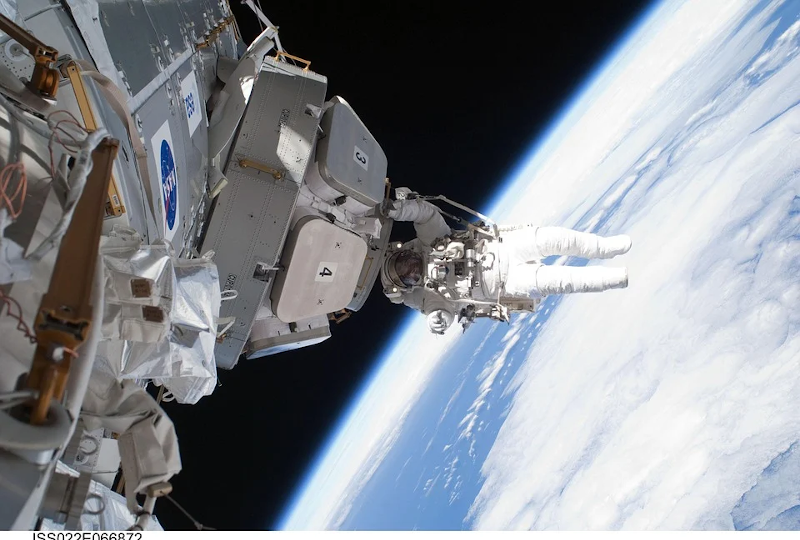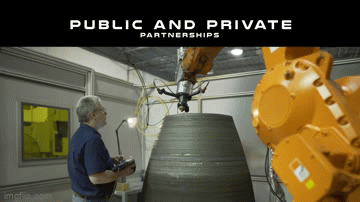
Charles R. Goulding and Adam Friedman consider how 3D printing fits into space-focused investment activity.
As news has come out with a significant investment of space companies in space exploration and research, more investors are looking for the next opportunities in the space business. Many investors, including special purpose acquisition companies (SPACs), have looked to use the public financial markets to sell shares of space-based companies. Annually, and hitting a peak in 2019, NASA spends upwards of $21.5 billion in space exploration expenditures. According to the Harvard Business Review, the “space economy” has generated approximately $300 billion in annual revenue, with 9.77% year-over-year growth by the year 2040.
Space companies are looking into developing everything from tourist space flight to cleaning space debris to launching satellites in low earth orbit (LEO) — a space altitude of 1,200 miles or less away from planet Earth. Elon Musk and Sam Branson have invested a significant amount of money in these space ventures with SpaceX company (SpaceX Falcon 9 private space launch) and Virgin Galactic (tourist space flight financed by the Virgin Group), respectively.
Gravity in Space
The following is an informal review of the physical nature of outer space:
In space, gravity is not that much less than it is on Earth. The gravity in space is 88% of Earth’s gravity. There is also no air in space. Therefore, whether an astronaut is balancing from a satellite or inside a space station, there is a very small “normal”, or physically reciprocal force, acting from the bottoms of astronauts’ bodies. While gravity is still intact in outer space, spacecraft exhibit free fall and many require dimensional design to optimize their orbits around Earth or other space bodies.
Scientists, especially at NASA, study the effects of microgravity, which is what astronauts and all mass bodies exhibit in space, rather than the gravity we experience on Earth. There are many other space studies that use calculus and quantum mathematics to study the effects of such matters as IMP gluing, primordial perturbations and quadratic gravity.
As a major aid to all of these factors, 3D printing can advance the scientific study of gravity in space through modeling, simulation, prototyping and tooling for these studies, which in place can lead to more and more space discovery for humans.
3D Printing and Space Simulators
3D printing can be used for making models of space objects that can first be simulated on the computer before going into space. Some space exploration simulator testing programs that utilize 3D printed designs include Space Engine, Celestia and WorldWide Telescope.
The models used in 3D printing design can be easily imported into the space simulators and data can be generated on space efficacy. With 3D printing, parts can be produced on a large scale, so testing materials and structures in space can be done and not have a downside effect of disintegrating or failing in a space environment.
3D Printing Space Infrastructure

3D printing space objects and structures can lead to infrastructure that maximizes the astrophysics and science that govern microgravity. 3D printed toruses and polyhedron shapes can create safer spacecraft, satellites that can withstand many different space conditions, and rockets that will hold the increasing masses together during flight to different locations in outer space.
As discussed in our article Seattle, A Software Leader, And 3D Printing Convergence, Planetary Resources used 3D printing casting patterns to assemble a satellite fuel tank. The casting patterns allow for manifolds, plenum and routing geometries that allow the satellite to make its maximum orbit in the most efficient path possible, barring any collisions or elastic collisions.
The Research & Development Tax Credit
Whether it’s used for creating and testing prototypes or for final production, 3D printing is a great indicator that R&D credit-eligible activities are taking place. Companies implementing this technology at any point should consider taking advantage of R&D Tax Credits.
Enacted in 1981, the now permanent Federal Research and Development (R&D) Tax Credit allows a credit that typically ranges from 4%-7% of eligible spending for new and improved products and processes. Qualified research must meet the following four criteria:
- Must be technological in nature
- Must be a component of the taxpayer’s business
- Must represent R&D in the experimental sense and generally includes all such costs related to the development or improvement of a product or process
- Must eliminate uncertainty through a process of experimentation that considers one or more alternatives
Eligible costs include US employee wages, cost of supplies consumed in the R&D process, cost of pre-production testing, US contract research expenses, and certain costs associated with developing a patent.
On December 18, 2015, President Obama signed the PATH Act, making the R&D Tax Credit permanent. Since 2016, the R&D credit can be used to offset Alternative Minimum Tax (AMT) or companies with revenue below $50MM and, startup businesses can obtain up to $250,000 per year in cash rebates that can be applied directly to payroll taxes.
Conclusion
The greatest realization that comes from 3D printing is that space companies can create space tools and structures that are produced in actual outer space. According to Andrew Rush, President of Made in Space Inc., 3D printing in space will spearhead efforts to produce greater and avant-garde technology. Presently, there are machines that produce robots that can work and move seconds after being printed, which is an invaluable asset in space exploration for places that are not yet conducive to human respiration. 3D printed machines will be made on-site in outer space where they will undergo stress under the same gravities, as discussed above. Another benefit will be that any tools that have to be rendered in space can be immediately made for testing in space stations and on satellite work sites.
